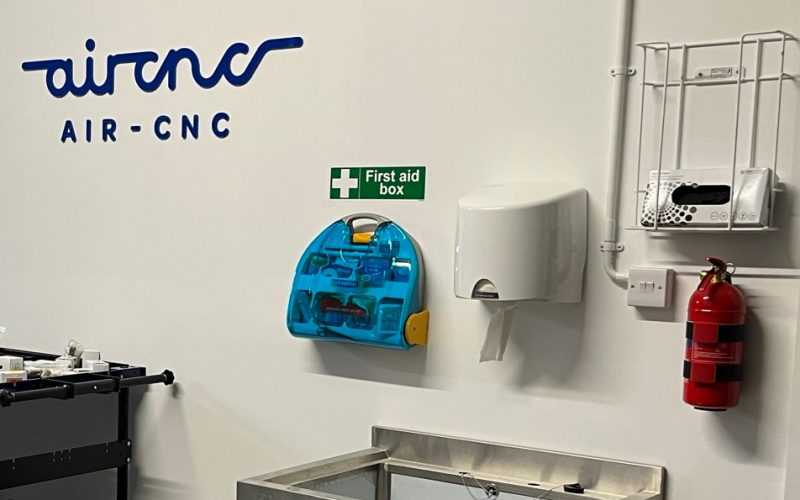Safety
Health and Safety in Air-CNC
At Air-CNC we take health and safety very seriously. You must familiarise yourself with our health and safety procedures before using our service and commit to following it throughout your stay with us.

- Always follow the workshop safety rules.
- Wear your safety shoes when in the workshop – even when not working, there are risks around you that could result in objects falling on your feet.
- Always carry out a pre-work risk assessment – follow instructions and any other guidance available including signs and notices.
- Never use a machine or item of work equipment that you have not been trained on and deemed competent to use.
- Never remove or override a guard – these have been provided for your safety. Only start work if you understand the instructions. If you have any concerns about safety – ask.
- Be alert to hazards and your surroundings – consider others working near you.
- Never eat, drink, smoke or apply cosmetics in the workshop.
- Do not operate machinery in the workshop if you are under the influence of alcohol or drugs. Note that some prescribed drugs can make you drowsy, so you should consider whether you are affected and inform us accordingly.
- Wear personal protective equipment as directed. Replace any equipment where you see signs of wear or damage.
- Do not touch your face when wearing gloves.
- Cover cuts and grazes and wash your hands before leaving the workshop.
- Ensure your hair is tied back and you are wearing clothing that will not get entangled within the machinery and work equipment.
- Keep your work area clean and tidy whilst working on work equipment and before leaving the workshop. Use lockers to store equipment where these are provided.
- Use local exhaust ventilation to remove dust/fumes from your work environment as necessary.
- Working with hazardous substances, electricity, lasers, ionising radiation, pressure systems, biohazards, refrigerants, gases etc all pose additional risks. Evaluate these risks and follow safe operating procedures. Only use if you are competent.
- Know the procedure to follow in the event of an emergency.
Book Now
Ready to transform your ideas into reality? Reserve your workshop space now.